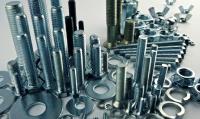 Add My Company
Add My Company
Sign In

Screws, nuts, washers and bolts can be found everywhere holding our world together, but some of them lead a much harder life than others, especially those used in harsh environments like offshore installations. Because nobody ever wants to dismantle a wind turbine or oil rig just to replace the fasteners, special corrosion-resistant alloys of stainless steel are used for them. This enables the supplier to guarantee a much longer service life, but that, in turn, requires clear and rigorous supervision of the material composition.
Any part of a marine structure – whether wind turbines, oil rigs or ships – that is permanently exposed to salt water and inclement weather must be shielded against corrosion. The same precautions taken for protecting the surfaces of these structures must also apply to even the smallest parts holding them together. Every offshore installation contains many thousands of fasteners – and every single nut, bolt or screw has an important job to fulfil, for at least as long as the structure itself.
To avoid too-frequent maintenance or, even worse, replacement of all the bolts before the structure itself is worn out, the fasteners are made of special corrosion-resistant materials that guarantee a much longer lifetime than usual. Different kinds of stainless steel, with cryptic names like “316”, “317” or “A4”, are used, each with its own alloy composition. For example, A4 stainless steel contains molybdenum, which significantly increases both strength and corrosion resistance to withstand caustic agents such as salt water (chlorides) and acids. It is recommended for use in highly aggressive environments.
A good way to ensure that these components are made of the correct material is to analyse its exact composition. This is where the non-destructive x-ray fluorescence method (XRF) is ideal. Using the FISCHERSCOPE® X-RAY XDLM® with its powerful WinFTM® software, it is both fast and easy to take very precise and accurate measurements of the alloy, in order to determine its composition. And using a small collimator together with a microfocus x-ray tube allows measurement even on tiny structures.
To verify if fasteners have the correct alloy composition needed for longevity under offshore and other harsh environments, the FISCHERSCOPE® X-RAY XDLM® is the best choice.
For more information on Material analysis on corrosion-resistant fasteners for longevity talk to Fischer Instrumentation
Enquire Now
List your company on FindTheNeedle.
